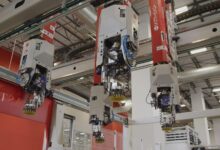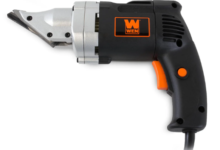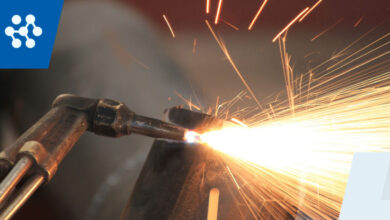Revolutionizing Woodworking: The Magic of CNC Woodworking Machines
Advertisement
Introduction
CNC woodworking machines have been a game-changer in the woodworking industry, offering precision, efficiency, and versatility like never before. These computer-controlled machines have transformed the way woodworkers approach their craft, enabling them to create intricate designs and complex shapes with ease. In this article, we will delve into the world of CNC woodworking machines, exploring their strengths, weaknesses, and everything in between. Whether you are a seasoned professional or a hobbyist looking to up your woodworking game, understanding these machines is key to taking your skills to the next level.
Strengths of CNC Woodworking Machines
CNC woodworking machines offer a multitude of advantages that have made them a popular choice among woodworkers. One of their biggest strengths is precision. These machines are capable of cutting, shaping, and carving with incredible accuracy, ensuring that every piece of work is precisely executed. This level of precision is hard to achieve with traditional woodworking tools, making CNC machines a valuable asset for intricate projects.
Another strength of CNC woodworking machines is efficiency. These machines can work tirelessly, 24/7, with minimal supervision, allowing woodworkers to focus on other tasks in their workshop. This increased productivity can lead to faster project turnaround times and higher output, ultimately boosting the overall efficiency of your woodworking operations.
Versatility is also a key strength of CNC woodworking machines. These machines are capable of handling a wide range of materials, from softwoods to hardwoods, and can create a variety of shapes and designs. This flexibility makes CNC machines suitable for a diverse range of woodworking projects, from furniture making to custom cabinetry.
Automation is another advantage of CNC woodworking machines. These machines can be programmed to perform a series of tasks automatically, saving woodworkers time and labor. With the ability to repeat cuts and designs consistently, CNC machines ensure uniformity and accuracy across multiple pieces, leading to professional results every time.
Increased safety is also a benefit of using CNC woodworking machines. These machines are equipped with safety features that help prevent accidents and injuries, such as emergency stop buttons and automatic tool changers. By minimizing the risk of workplace incidents, CNC machines provide a safer working environment for woodworkers.
Scalability is a significant advantage of CNC woodworking machines. Whether you are a one-person shop or a large woodworking business, these machines can be scaled to meet your specific production needs. From small-scale projects to large-scale manufacturing, CNC machines offer the flexibility to grow your woodworking business seamlessly.
Cost-effectiveness is another strength of CNC woodworking machines. While the initial investment may be higher than traditional woodworking tools, the long-term cost savings are undeniable. With increased efficiency, productivity, and precision, CNC machines can help woodworkers save time and money in the long run, making them a worthwhile investment for your woodworking business.
Weaknesses of CNC Woodworking Machines
Despite their many advantages, CNC woodworking machines also have some weaknesses that woodworkers should be aware of. One of the main drawbacks of CNC machines is the learning curve. Operating these complex machines requires knowledge of computer programming, CAD/CAM software, and machine operation, which can be challenging for beginners. However, with proper training and practice, woodworkers can overcome this hurdle and master the art of CNC woodworking.
Another weakness of CNC woodworking machines is maintenance. These machines consist of intricate parts and components that require regular maintenance and calibration to ensure optimal performance. Neglecting maintenance can lead to machine malfunctions and reduced accuracy, impacting the quality of your work. It is essential to establish a maintenance routine and follow manufacturer guidelines to keep your CNC machine in top condition.
Limited creativity is a potential weakness of CNC woodworking machines. While these machines excel at producing precise and intricate designs, they can sometimes restrict the creative freedom of woodworkers. CNC machines operate based on programmed instructions, which may limit spontaneous creativity and experimentation in the woodworking process. Balancing precision with artistic expression is essential when using CNC machines to ensure that your work stands out while maintaining the desired level of accuracy.
Another weakness of CNC woodworking machines is the initial investment cost. Purchasing a CNC machine and the necessary software can be a significant financial commitment, especially for small woodworking businesses or hobbyists. However, as mentioned earlier, the long-term cost savings and increased efficiency of CNC machines can offset the initial investment over time, making them a valuable asset for your woodworking endeavors.
Space requirements can also be a limitation of CNC woodworking machines. These machines often take up a considerable amount of space in a workshop, requiring sufficient room for operation, maintenance, and material storage. If you have limited space in your workshop, you may need to plan accordingly to accommodate a CNC machine and allocate space efficiently for other woodworking tools and equipment.
Dependence on electricity is another weakness of CNC woodworking machines. These machines rely on a stable power supply to operate effectively, which can be a challenge in areas prone to power outages or fluctuations. Investing in backup power sources, such as generators or uninterruptible power supplies, can help mitigate this risk and ensure uninterrupted operation of your CNC machine.
Finally, complexity can be a drawback of CNC woodworking machines. Mastering all the features and capabilities of these machines can be overwhelming, especially for woodworkers new to CNC technology. It is essential to start with basic projects and gradually build your skills and knowledge to harness the full potential of CNC machines. Continuous learning and experimentation are key to overcoming the complexity of CNC woodworking and unlocking new possibilities for your woodworking projects.
CNC Woodworking Machines: Complete Information
| Information | Details |
|---|---|
| Type | CNC woodworking machine |
| Operation | Computer-controlled |
| Materials | Softwoods, hardwoods, and more |
| Applications | Furniture making, cabinetry, and more |
| Precision | High accuracy |
| Efficiency | Increased productivity |
| Maintenance | Regular upkeep required |
Frequently Asked Questions About CNC Woodworking Machines
1. What is a CNC woodworking machine?
A CNC woodworking machine is a computer-controlled tool that is used to cut, shape, and carve wood with precision and accuracy.
2. What materials can be used with CNC woodworking machines?
CNC woodworking machines can process a wide range of materials, including softwoods, hardwoods, plastics, and composites.
3. How do CNC woodworking machines work?
CNC woodworking machines operate based on programmed instructions that control the movement of the cutting tools to create the desired design or shape.
4. What are the benefits of using CNC woodworking machines?
The benefits of CNC woodworking machines include precision, efficiency, versatility, automation, increased safety, scalability, and cost-effectiveness.
5. What are the limitations of CNC woodworking machines?
Limitations of CNC woodworking machines include the learning curve, maintenance requirements, limited creativity, initial investment cost, space requirements, dependence on electricity, and complexity.
6. How can I overcome the challenges of using CNC woodworking machines?
To overcome the challenges of using CNC woodworking machines, it is essential to invest in training, establish a maintenance routine, balance precision with creativity, manage costs effectively, allocate space efficiently, ensure a stable power supply, and continuously improve your skills.
7. What are some tips for maximizing the benefits of CNC woodworking machines?
To maximize the benefits of CNC woodworking machines, focus on proper programming, tool selection, material handling, maintenance, safety precautions, design considerations, and workflow optimization.
Conclusion
In conclusion, CNC woodworking machines have revolutionized the woodworking industry, offering a powerful combination of precision, efficiency, and versatility. While these machines have their strengths and weaknesses, understanding how to harness their full potential is key to unleashing your creativity and maximizing your woodworking projects. By investing in training, maintenance, and continuous learning, you can take full advantage of CNC technology and elevate your woodworking skills to new heights. Whether you are a seasoned professional or a beginner in the woodworking world, CNC machines can open up a world of possibilities for you. Embrace the magic of CNC woodworking machines and see your woodworking dreams come to life.
So, are you ready to take your woodworking to the next level with CNC technology? Explore the world of CNC woodworking machines and discover the endless possibilities that await you. From precision cutting to intricate carving, CNC machines can help you create masterful pieces that showcase your craftsmanship and skill. Don’t let the challenges deter you – embrace the opportunities that CNC woodworking machines offer and watch your woodworking projects soar to new heights. The future of woodworking is here, and it’s waiting for you to join the revolution.
Disclaimer: The information provided in this article is for educational purposes only. The author is not responsible for any misuse or misinterpretation of the content. Please consult with a professional before using CNC woodworking machines.








